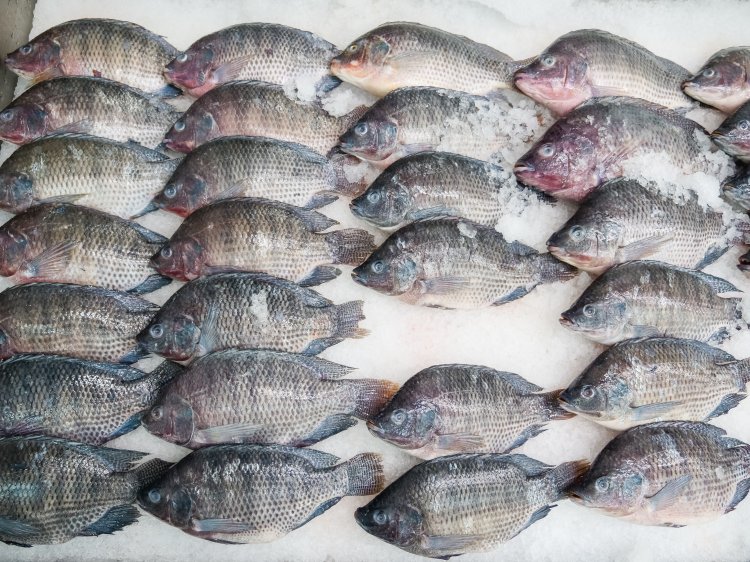ALL ABOUT TILAPIA
All about tilapia fish. Read to find out more!
Share this Post to earn Money ( Upto ₹100 per 1000 Views )

Tilapia is a type of freshwater fish that belongs to the cichlid family. It is native to various parts of Africa, but due to its hardiness and adaptability, it is now widely distributed and farmed in many countries around the world by the best exotic fish exporters. It is a popular choice for aquaculture due to its rapid growth rate, ability to tolerate different water conditions, and relatively low cost of production according to seafood processing companies.
Here are some key points about tilapia:
· Appearance: This fish typically has an oval-shaped body with a laterally compressed form. They have a single dorsal fin and a continuous dorsal fin with spines followed by a soft-rayed section. The coloration can vary depending on the species and environmental conditions.
· Species: There are numerous species of it, but some of the most common ones include Nile tilapia (Oreochromis niloticus), Mozambique tilapia (Oreochromis mossambicus), Blue tilapia (Oreochromis aureus), and several others. Nile tilapia is the most widely cultivated and consumed species.
· Habitat: They can thrive in various aquatic environments, including rivers, lakes, ponds, and even brackish water. They are known for their tolerance to a wide range of water temperatures and qualities. In aquaculture, they can be grown in tanks, cages, or earthen ponds.
· Diet: They are omnivorous and have a flexible diet. They can consume algae, aquatic plants, insects, small invertebrates, and detritus. In aquaculture, they are often fed with commercial feeds that provide a balanced diet for optimal growth.
· Reproduction: They are known for their high reproductive capacity. They are generally oviparous, with females laying eggs and males fertilising them externally. The parents often create nests or excavate depressions in the substrate to protect and care for the eggs until they hatch.
· Economic Importance: This fish is one of the most important species in aquaculture globally. It is valued for its mild taste, firm texture, and versatility in cooking. It is a popular choice for fish farming due to its rapid growth, ease of breeding, and ability to tolerate a wide range of environmental conditions.
· Nutritional Value: It is a good source of protein, low in saturated fats, and provides essential nutrients like omega-3 fatty acids, vitamins (such as niacin, vitamin B12), and minerals (including selenium, phosphorus, and potassium).
· Environmental Concerns: While tilapia farming has contributed to global fish production and food security, there have been some concerns regarding its impact on the environment. In some cases, such farming practices have led to water pollution, habitat destruction, and the introduction of non-native species.
According to a reputed seafood export company, specific details about this fish may vary depending on the species and geographical region, and different types. Nonetheless, these points provide a general overview of tilapia and its significance in aquaculture and culinary contexts.
The flavour of tilapia is often described as mild and slightly sweet. It has a relatively neutral taste compared to some other fish species, which makes it versatile and adaptable to various cooking methods and flavour profiles. The mildness of tilapia allows it to absorb the flavours of herbs, spices, and sauces used in different recipes, making it a popular choice for a wide range of culinary preparations. The texture of tilapia is firm yet tender when cooked properly, adding to its appeal in dishes.
What kind of dishes can you make with Tilapia?
Tilapia is a versatile fish that can be used in a wide range of dishes. Here are some popular preparations and culinary uses of tilapia:
· Grilled: Grilling it is a simple and healthy way to enjoy its mild flavour. Season the fish with herbs, spices, and a squeeze of lemon or lime juice, then grill it until it's cooked through. Serve it with grilled vegetables or a side salad.
· Baked: Baking the fish is another easy and delicious method. You can coat the fish with breadcrumbs or a mixture of herbs and spices, then bake it in the oven until it's golden and flaky. Serve it with roasted potatoes or steamed vegetables.
· Fried: It can be breaded and fried to create a crispy and flavourful dish. You can use a simple flour or breadcrumb coating, or get creative with different seasonings or a batter. Serve it with tartar sauce, coleslaw, and fries for a classic fish and chips experience.
· Tacos: It is well-suited for making fish tacos. You can grill, bake, or pan-fry the fish and then serve it in warm tortillas with fresh toppings like salsa, avocado, shredded lettuce, and a squeeze of lime juice. It makes for a tasty and light meal.
· Curry: This fish can be used in various curries, such as Thai green curry or Indian-style curry. The fish absorbs the flavours of the spices and sauces, resulting in a delicious and aromatic dish. Serve it with steamed rice or naan bread.
· Stir-Fry: It works well in stir-fry dishes. Cut the fish into bite-sized pieces and quickly cook it with vegetables like bell peppers, broccoli, carrots, and snow peas. Add soy sauce, garlic, ginger, and other seasonings for a flavourful stir-fry.
· Ceviche: Ceviche is a popular dish in Latin American cuisine, where raw fish is marinated in citrus juices to "cook" it. You can prepare a tilapia ceviche by combining diced tilapia with lime or lemon juice, onions, cilantro, tomatoes, and other ingredients. Serve it chilled as an appetizer or light meal.
· Fillet with Sauce: Pan-fried or grilled tilapia fillets can be served with various sauces, such as lemon butter sauce, creamy dill sauce, or a tangy salsa. The sauce adds extra flavour and enhances the overall dish.









